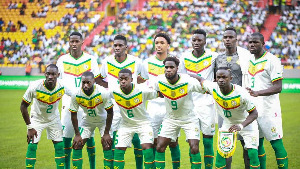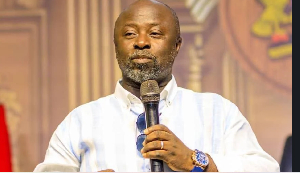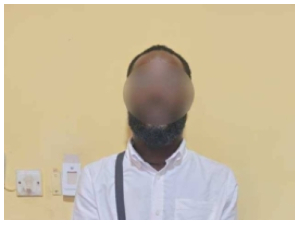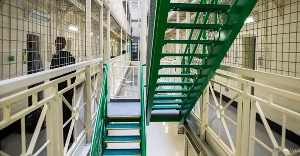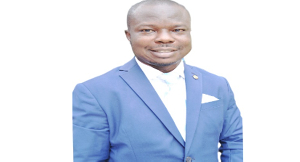Indeed, I am from Bolga in the Upper East Region. I have lived my over three decades of life largely in the Region.
However, I am not happy, or should I say, proud of certain developments in my home Region. I make this confession about the deplorable and despicable spate of development in my Region as against the Upper West Region.
The choice of the Upper West Region for obvious reasons. Apart from the fact that culturally, the Frafra and Dagaaba are playmates, for which reason we rightfully refer to them as slaves, historically, the then Upper Region was headquartered in Bolga. Bolga was therefore endowed with government bungalows and residential quarters cum tarred and paved roads. Even salaries were either paid in Bolga or the funds transported from Bolga to Wa for onward payment. So you see the Frafra’s superiority over his slave the Dagao!!!
When growing up, I heard my Kasena Uncles tease my cousins, the Sissala that they should be thankful for Col. Roger Felli’s death, for without that development, they (Upper Westners) would never have gained independence from the Kasena (meaning from Roger Felli). I was later to read from Books that the late Col. Roger Felli is actually on record to have said that it is over his dead body that Upper West would succeed from the Union with the Upper East.
However, several decades down the line, I am convinced that the Upper East Region of the day had viciously maligned the Upper Westners of needed and essential development without justification. I am convinced that had the Upper Westners had their independence earlier than in 1983, the Upper West would have been a better oasis of a paradise than it is today. Reasons for this my rather weird assertion would be expounded below.
My close contact with the Upper West begun when I gained admission into the University for Development Studies to pursue a four year Bachelor of Arts Programme in Integrated Development Studies.
Since then, my umbilical cord to the Region have remained intact. And I can say, without the faintest shadow of doubt, that right from 2005, the place has always improved in its aesthetics each time I return to her from my base in Bolga, and sometimes in Tamale.
For the purpose of this write up, I would want to narrow the issues down to the road network there. I have often times observed in awe and admiration how different sections of the township roads are tarred anew each time I visit. It is usually done qualitatively.
The building inspectors also seem to be proactive in that region. Hardly do you see sprawling areas without clearly demarcated roads lanes for other amenities. The town is particularly well kept and appears well planned. The township roads particularly are not the kind of poor third grade coal tar surfaces that I am used to seeing in other places. I have also observed that in Wa, the roads are either not done at all, or if they have to be done, they are usually done very well.
Now, lets take a glance at Bolga!! The popular Aboley Junction road towards ‘THE POINT’ Drinking bar, through to Zamse Secondary was done not quite long ago. The work was so poorly done, that as I write, some pot holes have developed on some sections of that road.
Take again, the McClean Dam link that goes towards the ministries area, one does not need to be an expert to see that that road was shabbily done.
Even the Soe residential area road linking Amiah Hospital Junction is nothing to write home about. This is a road which at the time of this write up had what looked like a second coating being put on it.
Folks, let illustrate how these particular new roads are usually done.
After the normal culverts are done, the roads filled to the required height with whatever aggregate, then comes the normal compaction. After this, coal tar is spread (sprayed) onto the surface of the road. This is followed by stone chippings. The roller follows, trying to press the chippings into the tar spread. After rolling over them awhile, viola!!! the road is finished.
It is this same process that is repeated when a second coat is purportedly added on. The second coat often comes at a time when the first coat is almost worn off. The total effect of these kinds of road is that the sheer torrents of rain can beat the coal tar off the roads.
For God’s sake, even the recent roads in University of Ghana, Legon are far more durable and more qualitative than the Bolga Municipal or township roads. The Legon roads are some kind of asphalted roads which gives you a nice, cozy and comfortable feel if you travel on them.
Apart from the named roads in the above article, all other township or municipal roads have been patched and re patched so much so that trekking on them gives you this awkward, bumpy and disorienting feel, that one would prefer Gulliver’s travels instead.
This is not to suggest that the other arterial roads in the region are any better. In fact, the least said about them, the better. It is a well known fact that the Bolga-Bongo road fell like a domino almost immediately after it was worked on. The Bolga-Bawku road is such that a crocodile’s back will be smoother.
Until the recent by-election in the Tongo area, the about 7km road from the main Tamale-Bolga trunk road into Tongo township was also in bad shape.
Back to the Upper West! They boast nice roads between Wa through to Kaleo, Nadowli and Jirapa. One can also talk about the Nadowli -Tangasia road. (just that Jirapa-Nandom is terrible)
In summary, it is my hope and prayer that the Upper Eastners would wake up from their slumber and take their place of pride in the scheme infrastructural development in Ghana. The region deserves better.
Lets prove wrong, those who opine that only non-indigenes have succeeded in developing the Region. Lets shed off the mentality that the Upper East is/has been the biggest beneficiaries of Ministerial reshuffles that brings non indigenes into the region.
Opinions of Wednesday, 3 February 2016
Columnist: Aminu , Richard Adongo




